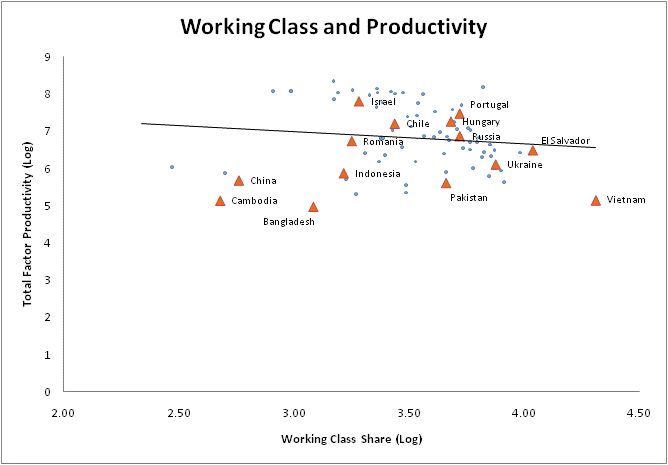Living through the current economic downturn, none of us take economic prosperity for granted anymore. We're aware now, more than ever, of how important it is to cultivate the things that contribute to long-run economic growth and sustained prosperity as well as to regulate and cope with those which can come to jeopardize that prosperity.
Economists mainly agree that there are two things that power long-run economic growth. Thanks to the Nobel-prize winning work of Robert Solow, we know that technology is one. Human capital is another. Detailed empirical studies by Harvard's Robert Barro and others show the connection between human capital and economic growth.
But what about class - does it matter?
Using data from the International Labour Organization, Charlotta Mellander developed class profiles for nations of the world. The graphs below show the relationship between two main classes - the creative class and the working class - and two common measures of economic growth - gross domestic product (GDP) per capita and total factor productivity (TFP).
The results could not be more striking.
The creative class is strongly related to both GDP per capita and total factor productivity. In preliminary statistical analysis conducted by Mellander, the creative class effect was even stronger than that from the well-established human capital measure.
Now look at the graphs for the working class. Societies with large concentrations of the working class have lower levels of GDP per capita and total factor productivity.
Source of all graphics: Martin Prosperity Institute
Tomorrow, I tackle the relationship between class and innovation.



